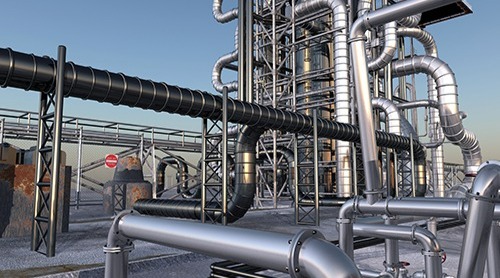Pipe Heat Tracing

What is Pipe Heat Tracing and How Does It Work?
In industrial processes, keeping fluids flowing smoothly through pipes is essential. But when temperatures drop and pipes freeze, it can cause problems. That's where pipe heat tracing comes in. Let's explore this important part of industrial infrastructure, looking at why it's important and how it works in various situations.
What is Pipe Heat Tracing?
Pipe heat tracing is the application of heat to pipes to prevent freezing, maintain optimal temperatures, and ensure uninterrupted fluid flow within industrial settings. Its importance cannot be overstated, as it safeguards against costly damage, downtime, and safety hazards.
Understanding the basics of pipe heat tracing is crucial for keeping industrial operations running smoothly. Heat loss in pipes, caused by poor insulation and cold temperatures, is a big problem. Without proper heat tracing, it can lead to serious issues like pipe bursts, interruptions in processes, and safety risks. That's why maintaining the right temperatures isn't just important—it's essential for ensuring product quality, safety, and efficiency. Consistently maintaining temperatures is key to keeping industrial infrastructure working well, preventing problems and keeping processes running smoothly.
How Pipe Heat Tracing Works
A pipe heat tracing system has several important parts that work together smoothly. These include electrical heating tape, which provides the main heat source, and different ways to attach it securely to the pipes. Power sources are also crucial for supplying electricity to the system, which is then converted into heat. To make sure the pipes stay at the right temperature and avoid getting too hot or too cold, the heat output is carefully controlled using things like self-regulating cables or temperature controllers. The main aim of pipe heat tracing systems is to keep fluids flowing continuously by maintaining the right temperatures, preventing freezing, and keeping industrial processes running smoothly.
Types of Pipe Heat Tracing Systems
When it comes to pipe heat tracing, there are several key solutions available, each tailored to specific needs and applications:
Self-regulating Solutions: These systems offer dynamic temperature control by adjusting heat output based on ambient temperatures, ensuring consistent temperatures throughout the piping system, enhancing energy efficiency, and safety, ideal for fluctuating environments.
Solutions with Temperature Limiters: Utilizing advanced mechanisms like thermostats or temperature controllers, these systems maintain temperatures within predefined limits, preventing overheating or suboptimal temperatures, thereby extending heating element lifespan and reducing energy consumption, highly versatile and customizable for various industrial applications.
Mineral Insulated Solutions: Engineered for extreme conditions, mineral-insulated heating cables withstand high temperatures and harsh chemicals, providing unmatched durability and resistance to corrosion and damage. Withstanding temperatures up to 1000°C, they ensure uninterrupted operation in aggressive industrial environments.
Different Applications of Pipe Heat Tracing
These diverse pipe heat tracing solutions find application across various industries, including frost protection, snow melt systems, prevention of tank content freezing, and maintaining operational conditions for instruments. From ensuring the safety of pipelines in cold climates to facilitating the smooth operation of critical industrial processes, pipe heat tracing plays a vital role in maintaining efficiency, productivity, and safety across diverse industrial sectors.
Partnering with Reliable Suppliers
Partnering with reliable suppliers is crucial for successful pipe heat tracing systems. Quality components are essential for efficiency, so it's important to get materials from trusted suppliers like ACI Controls. These suppliers offer customized solutions tailored to specific industrial needs and ensure compatibility with existing infrastructure, reducing downtime and maximizing efficiency. They also provide valuable technical support and expertise throughout the process, from design to maintenance. Choosing reputable suppliers ensures that businesses invest in pipe heat tracing systems that perform well, last long, and provide peace of mind.
The Final Takeaway
Pipe heat tracing is an essential part of industrial operations, quietly keeping processes running smoothly and preventing disasters. Operations managers can strengthen their infrastructure and tackle challenges confidently by understanding how it works, exploring its many uses, and working with trusted suppliers. It's important to remember that reliability is crucial in pipe heat tracing, and selecting the right partner is vital for maintaining operational excellence.

